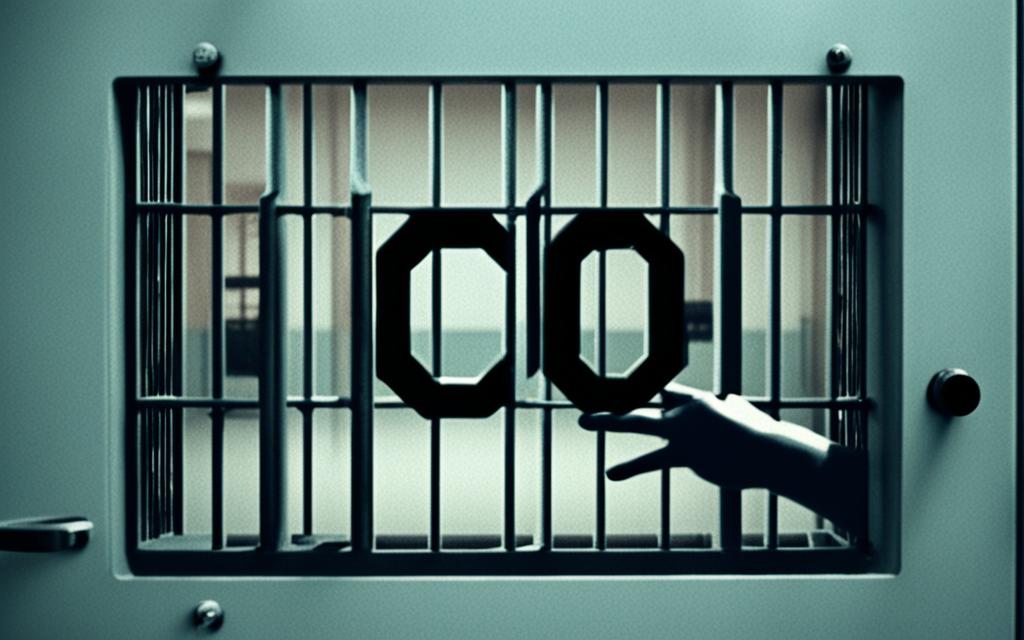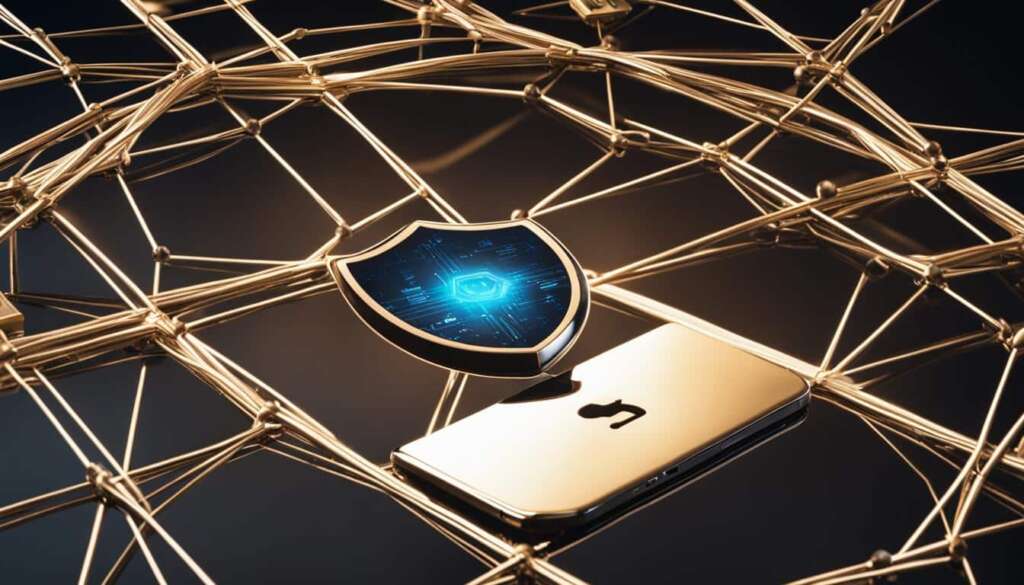Table of Contents
In the world of corrections, you might get puzzled by all the shorthand used. Have you heard of PC in jail and wondered what it means? We’re going to explain what PC is in prison and why it matters.
In jail, PC is short for Protective Custody. It means keeping some inmates apart from others to keep them safe. These inmates are separated to avoid harm from other prisoners1. Facilities like federal and state prisons, as well as local jails, use this method.
Protective Custody helps inmates who are in danger for various reasons. Maybe they are very well-known, or they’ve told on others. By keeping them separate, PC makes sure they stay out of harm’s way1.
While in Protective Custody, inmates might not get to do some things that others can. This is for their safety, to stop fights or problems1. Also, these inmates are watched more closely and have stricter rules about where they can go1.
Key Takeaways:
- PC stands for Protective Custody in the context of jail and prison1.
- Protective Custody is used to segregate certain inmates from the general population for their safety1.
- Inmates in PC may have limited access to privileges and activities available to the general population1.
- PC is utilized to protect high-profile inmates, witnesses, informants, or individuals facing threats from other inmates1.
- Inmates in PC may experience increased security measures and restrictions on their movements1.
Now you know what PC means in jail. It’s all about keeping some inmates safe. Stay with us for more insight on Protective Custody, including why some inmates might need it.
Understanding Protective Custody in Jail
SEO relevant keywords: understanding PC in jail, purpose of PC in jail, inmates in protective custody
Protective Custody (PC) in jail is key for the safety of inmates at risk. It’s vital to grasp PC’s role in keeping vulnerable folks safe.
Inmates in PC are kept apart from others who might threaten them. They live in special parts of the jail, like the Special Housing Unit (SHU).
PC aims to protect inmates from assault or harm. It helps those who have been attacked before, have threats against them, or could be targeted.
“Inmates in protective custody are known to spend months on end in the Special Housing Unit (SHU)”2
Those in PC often stay in their cells for up to 24 hours a day. Their time out is limited, keeping movement and socializing minimal.
“Typically, inmates spend 23 to 24 hours a day in a SHU cell.”2
Many seek PC due to risks like threats from inmates, issues with gangs, or high-profile case involvement.
“Federal prisoners who seek protective custody often do so due to either inmate assault or threats from other prisoners.”2
Sex crime convicts and informants often need PC for their safety. They face big risks from others in the main jail area.
“Inmates convicted of sexual offenses and known informants are more likely to enter protective custody.”2
LGBT inmates in tough jails might choose PC for protection. It offers them a safer environment.
“LGBT inmates at rougher institutions are more likely to elect protective custody over the general population.”2
PC isn’t always forever. Many return to the general jail area after their safety is sorted.
“Most inmates who check into protective custody are eventually released back into the same compound.”2
Yet, some may stay in SHU long-term if their protection need is still being checked.
“In some cases, inmates are held in the SHU indefinitely rather than transferred after verification of their need for protection.”2
Being in PC can still pose dangers. In SHU, inmates may face tension and conflict.
“Protective custody can be as dangerous as the general population, with inmates housed together on administrative detention and disciplinary segregation statuses in the SHU.”2
The Federal Bureau of Prisons locks inmates in cells to protect them. This can last for a long time.
“The Federal Bureau of Prisons’ way of protecting those in protective custody is to lock them in a cell for days, months, or years.”2
Life in SHU is hard and risky. The restricted setting increases dangers from within the jail.
“Living in the SHU is considered difficult and dangerous.”2
Also, the federal prison system’s way of handling separation has been called lax. This increases SHU risks.
“The federal clearly illustrates the importance of keeping threats away from those who should be separated, ensuring safety within the SHU.”2
For PC to work well, clear communication is vital. Prison officials, inmates, and legal teams must work together to protect those at risk.
“Dialogue between prison officials, inmates, legal advocates, and policymakers is essential for the efficacy of protective custody.”2
Reasons for Seeking Protective Custody in Jail
Inmates may ask for Protective Custody (PC) for many reasons. It helps keep them safe inside the jail. Mainly, it’s about avoiding harm or threats from others.
Some inmates seek PC if they’ve been threatened or attacked. This makes them fear for their safety. Issues like gang conflicts, past jobs as police or high-profile careers can trigger this need. Violence or sexual crime offenders might also want PC to avoid revenge attacks.
Informants, crucial in helping law enforcement, may need PC to stay safe. Their role in solving crimes makes them targets. Similarly, those aware of dangerous situations in jail might opt for PC. They do this to avoid risks linked to their knowledge.
PC is a way to keep inmates safe, not to punish them. It’s meant to reduce risks. Yet, it comes with its own set of challenges.
Life in PC limits what inmates can do. They might spend most of their day locked up. Shower and exercise times are cut short, and access to things like TVs and phones is limited. These rules aim to protect them but also restrict their freedom.
The time an inmate spends in PC varies. It might be short or last their entire sentence. This depends on each case and the ongoing safety review.
But PC isn’t totally safe. Interacting with other inmates during chores or meal times can still be risky. It exposes PC inmates to threats.
Choosing PC is essential for those scared for their lives. Yet, it can lead to loneliness and cut off contact with the world outside. It’s a decision that should be weighed carefully. The benefits and drawbacks must be considered.
Please ensure that the image is placed above this line. The keyword related to this section is “inmate safety”.
The statistical reference:3.
The Process of Requesting Protective Custody in Jail
Inmates who feel threatened can ask for Protective Custody (PC) inside4the prison. They can talk to any staff member, like a correctional officer, counselor, or supervisor, about needing protection. The staff will look into the matter and talk about why the inmate needs PC4.
Even though inmates might not give lots of details, staff must take every PC request4seriously. If an inmate is really worried about their safety, they must be put in PC. Then, the Special Investigative Services (SIS) may check further for security reasons4.
The goal of asking for protective custody is to keep threatened inmates safe. They’re placed apart to protect them from other prisoners5. Procedures can vary, but protecting at-risk inmates is always the main aim4.
The Environment and Conditions in PC Prison
Inmates in Protective Custody (PC) often stay in the Special Housing Unit (SHU). The SHU is a separate space for them6. The conditions inside SHU can be different, depending on the prison and its rules.
PC aims to protect vulnerable inmates. Yet, the reality is tough6. Sometimes inmates are kept in the SHU too long. This can harm their mental health.
The SHU limits how much they can interact with others. Spending most of the day in a cell leads to loneliness6. It’s hard without visits or fun activities.
The New Jersey Department of Corrections (NJDOC) looks after PC. Visit their website for information like inmate locator and visiting hours6. It helps families and friends understand the PC environment.
Many things affect PC conditions, like prison size and rules6. Efforts are made to better these conditions for PC inmates.
Conclusion
Protective Custody (PC) in jails is very important. It keeps certain inmates safe from harm. This safety helps everyone inside stay secure and treated fairly.
Still, PC can cause inmates to feel lonely because they’re kept away from others. They might not get to join in many activities. Making PC better is essential to keep everyone’s needs in balance.
PC is big for justice. It protects people who need it most, respecting their rights. This means the system can focus on helping them in the best way.
Knowing about PC helps everyone understand how it works. Lawyers, inmates, and citizens can push for its improvement. This ensures fairness and safety remain top priorities.
Learning more about PC is easy. Just click this link789.
FAQ
What does PC stand for in jail?
In jails and prisons, PC means Protective Custody.
What is the purpose of Protective Custody in jail?
Its main goal is to protect inmates who might be in danger. It keeps those who feel threatened safe.
Why do inmates seek Protective Custody in jail?
Many reasons lead inmates to seek Protective Custody. They might have been threatened, attacked, or don’t want to mix with the general jail population.
How can inmates request Protective Custody placement?
To get into Protective Custody, inmates should talk to any prison staff. They just need to explain why they need protection.
What happens once an inmate is placed in Protective Custody?
After getting into PC, there’s usually more checking done by a special team called the SIS.
Where are inmates in Protective Custody housed?
Those in Protective Custody often stay in a part called the Special Housing Unit, or SHU, for quite a while.
What is the significance of Protective Custody in jail?
Protective Custody is vital for keeping some inmates safe. It helps ensure their security and welfare in jail.
Source Links
- https://www.tdcj.texas.gov/definitions/index.html – Definitions & Acronyms
- https://federalcriminaldefenseattorney.com/prison-life/protective-custody-in-prison-pc/ – Protective Custody | What is PC in Prison?
- https://medium.com/real-prison-talk/what-is-protective-custody-in-prison-and-why-would-you-want-it-bfd31b14971f – What is Protective Custody in Prison and Why Would You Want It?
- https://pcsite.co.uk/what-does-pc-mean-in-jail/amp/ – Understanding PC in Jail Context – An Overview
- https://slate.com/news-and-politics/2003/08/how-safe-is-protective-custody.html – How safe is protective custody?
- https://www.nj.gov/corrections/pdf/OTS/InmateFamilyResources/UnderstandingNJDOCPrisonSystem.pdf – Family Resource Guide Rev 04-2016
- https://www.doc.ks.gov/publications/KDOCAcronyms02.04.22.pdf – PDF
- https://sao9th.com/resources/frequently-asked-questions/legal-glossary/ – Legal Glossary
- https://www.maricopa.gov/919/Probable-Cause-Versus-Reasonable-Suspici – Probable Cause Versus Reasonable Suspicion








